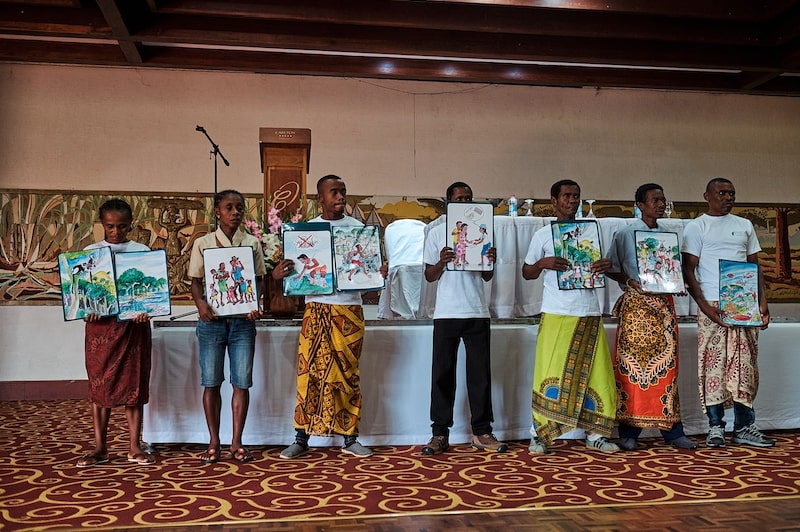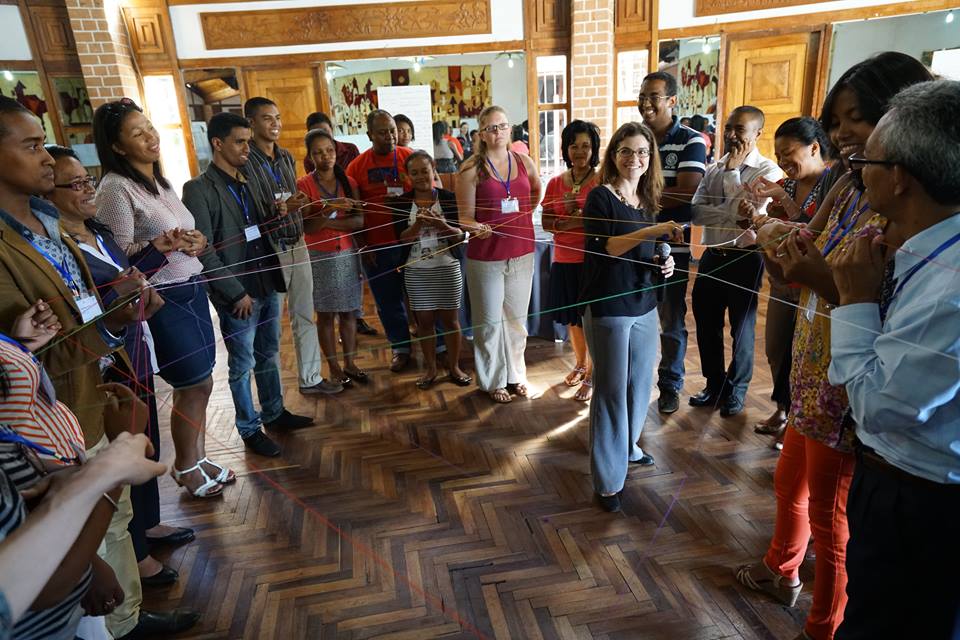
Advice on Creating a Network of PHE Partners
Lessons from Madagascar on Integrating Health and Environment
October 21, 2021
By: Molly Grodin
This post was originally published on the Knowledge SUCCESS website. To view the original post, click here.
Madagascar has remarkable biodiversity, with 80% of its flora and fauna found nowhere else in the world. While its economy is highly reliant on natural resources, significant unmet health and economic needs drive unsustainable practices. In the face of growing uncertainty—Madagascar is extremely susceptible to climate change—we spoke to Madagascar PHE Network Coordinator Nantenaina Tahiry Andriamalala about how early population, health, and environment (PHE) successes have led to a rich network of organizations working to address health and conservation needs in tandem. Andriamalala is also a Champion of the People-Planet Connection, a new website to support learning and collaboration in the PHE community. The discussion has been edited for length and flow.
Tell me a little about the history of PHE in Madagascar—when and why did it start?
Starting as early as 1980, Madagascar’s Integrated Conservation and Development Project began linking natural resource management with sustainable development. Within five years it included health and family planning components and thus began population, health, and environment (PHE) in Madagascar.
While this integrated approach has evolved over time, it was grounded in the National Environment Action Plan and the understanding that we cannot fully protect the planet without protecting our people. There is a lot to be gained by integrating the environmental and health communities. Our many conservation groups, for example, are very well equipped to work in ecologically rich areas, but the people living in these remote areas have huge unmet health needs. Health organizations, on the other hand, have unique capacities to address health needs but may not have the reach or strong relationships to extend services into these communities.
A true PHE partnership model is actually more effective than just having one organization implement the different components. The real value is in having multidisciplinary teams with strong skills in their respective sector join for site activities. The collaboration is mutually beneficial.
How did the PHE Madagascar Network start and what role does it play?
The PHE Madagascar Network—led by Blue Ventures—built on decades of population, health, and environment projects across the country. It emerged during a national workshop with diverse stakeholders and donors who together identified an opportunity to better share experiences across the country.
The network’s objective is simply to connect and support partnership between health and conservation organizations. We offer a learning platform that supports partners to share their experiences, tools, and technical resources. The exchange also helps government authorities track progress in biodiversity sites.
Through the network, partners meet each other and learn what each other are doing and discover ways to work together. We host listservs for national and regional development groups and a quarterly newsletter. We offer 2–3 national coordination meetings a year to bring staff together, most recently done remotely. We also offer 1–2 network meetings for each region, including an annual learning exchange visit to see how the approach is being implemented and engage with field staff and the community.
Beyond connecting organizations, we create and field-test educational materials that we share with all partners and sometimes even support individual partners. We have been working with the relevant ministries on a national PHE framework that would support adoption of the approach for the country.
What sort of lessons have you learned from this network that might be helpful for others trying to connect and convene partners?
One of the basic lessons has been to consider what value the network brings. We started with a general consultation with partners to fully map out partners, their current situations, the best ways to implement the network, and what advantage it could bring to the different areas. This initial consultation underscored the need for networking and for technical support and resources.
We are keenly aware that the network needs to bring members value. We make it very simple to participate and there are no fees. We ensure it has tangible benefits, such as by sharing funding opportunities, supporting staff capacity with training sessions, and perhaps most importantly helping organizations increase the reach and impact of their activities. PHE can be difficult for a new organization to understand and we have created all sorts of partnership guides to provide them support.
We also follow what is happening from the network so that partners can identify specific needs across the different stages of progress. This includes support for policymakers, who we involve along the way to ensure what we are doing will also be supported by the government.
One of the most powerful learning exchange moments is through site visits, which provide a concrete opportunity to see PHE in action. We bring together NGOs, policymakers, and communities to see sites where NGOs are implementing PHE and monitor what’s happening on the ground. We encourage participants to bring their own suggestions and create a brainstorm forum at the end to consider how to improve site activities.
What remains the biggest challenge for PHE in Madagascar and how have you addressed it?
On the policy and environmental side, staff turnover is always a big challenge that really impacts things we have already started, such as creating a national policy framework. When there is a changeover we need to go back and start over. The good news is that at least through the network we have created resources and materials to help policymakers get up to speed quickly.
Cultural norms can also be challenging for the adoption of PHE, particularly for the acceptance of reproductive health and family planning. Some partners struggle to work within the communities. One benefit of PHE is that it can appeal to different audiences. If you invite men in the community to a family health session, for example, they simply will not come. But if you are talking about conservation, it is men who attend. By having health staff present, we can expose the men, who are often the decision-makers, to family planning information they might not otherwise hear. The same holds true for sharing conservation principles in family health sessions where women are present. We can introduce alternative income-generating activities, which may offer women more options to earn money and support their families. It is a complementary approach.
What are you most hopeful about for PHE in Madagascar and why?
I’m confident that this approach can really change the lives of communities. Even in the long-term, and as it relates to climate change, it is a practical approach that adds tangible value. The most isolated, vulnerable communities, and particularly women and youth, will be more affected by climate disruptions and they have the most to gain from PHE, whether through health services or livelihood activities. We really need to convince the international community that there is a link. Climate change is not just about the environment. Thinking in a more integrated manner can better support both communities and conservation.
How can someone reading this learn more about PHE in Madagascar?
First off, I would suggest visiting the PeoplePlanetConnect.org site, which has many resources, including an interactive discourse platform where anyone can share their thoughts or start a discussion topic. We also have a Google Group sign-up form on the PHEMadagascar.org website if you are interested in joining the network.






